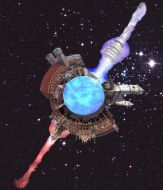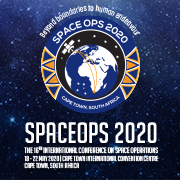›Gamma-Ray Bursts 2012
It is a pleasure to announce the next combined Fermi/Swift GRB conference covering recent advances in all aspects of gamma-ray burst observations and theory. This conference will be held in Munich, Germany, on 7-11 May 2012, and follows similar previous combined Fermi/Swift meetings in Huntsville (Oct. 2008) and Annapolis (Nov. 2010).
Gamma-ray bursts are the most energetic explosions in the Universe and are thought to be the birth signatures of black holes. This is an exciting time in the GRB field as various missions provide a wealth of new data on this still puzzling phenomenon. The Fermi misson provides unprecedented spectral coverage over 7 decades in energy, and among others discovered new spectral components which challenge our standard picture of the prompt emission. The Swift mission continuous to swiftly monitor and locate GRBs in multiple wavebands, providing the basis for all ground-based follow-up observations towards redshift measurements and afterglow and host property investigations. AGILE, INTEGRAL, Suzaku and Konus continue to provide crucial information on GRB properties, and the MAXI mission provides an all sky X-ray monitoring of transients. There is also growing capability for follow-up observations by ground-based telescopes at basically all wavelengths. Besides the classical optical/infrared/radio observations, searches are underway for TeV emission, neutrinos and gravitational waves. Moreover, new experiments are expected to have returned first data, among others IKAROS on the prompt polarization properties or ALMA on sub-millimeter properties. And last but not least, the unexpected is bringing us child-like astonishments at least once per year with a "GRB-trigger" which turns out to be not related to GRBs. Complementing all these new observational results, a huge theoretical effort is underway to understand the GRB phenomenon and keep up with the constant new puzzles coming from the data.
This conference will bring together astrophysicists, neutrino physicists and gravitational wave scientists to discuss the latest data and theories, to build synergistic collaborations between the fields and across wavelengths, and beyond better understanding the GRB phenomenon to develop GRBs as a powerful probe of a variety of fundamental questions in present-day research.
Track this event on your Apple calendar














 Germany
Germany